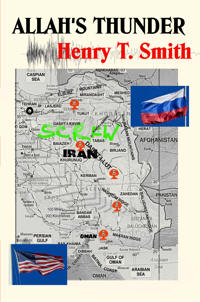 Blurb: Blurb:
Iran posed a serious threat to the world order at a time when the United States of American and post-communist Russia sought a new world-wide balance of power. Iranian-backed terrorists believed that they had a divine right to kidnap and killed US citizens anywhere they could be found. Islamic Fundamentalists were challenging Russia's authority in the former Soviet Union's southern republics. Then an old submarine of the former Soviet navy crashed in the Arabian Gulf. When the Americans considered a secret salvage operation to recover its nuclear warheads, options for revenge became available.
A CIA think-tank devised a scheme for assassination by earthquake. Neville Sangster, its director, had to take life and death decisions while evading the probings of a Congressional committee. On the Russian side, a fruitless search for the lost submarine, an Israeli attempt to steal nuclear warheads from the United States, and Saint Petersburg Seismic Institute's attempts to forecast an earthquake in the central desert belt focussed the attention of General Pugachyov of the Department of Special Operations on Iran.
General Pugachyov saw himself as a man of enormous vision who was hampered by his department's watchdog, General Shvabrin; a traditionalist who was determined to prevent independent action by the likes of Pugachyov. General Shvabrin, Pugachyov knew, would consider his plan to be an act of supreme lunacy, while the architect of that plan preferred to think of it as the greatest engineering project of all time . . . |

